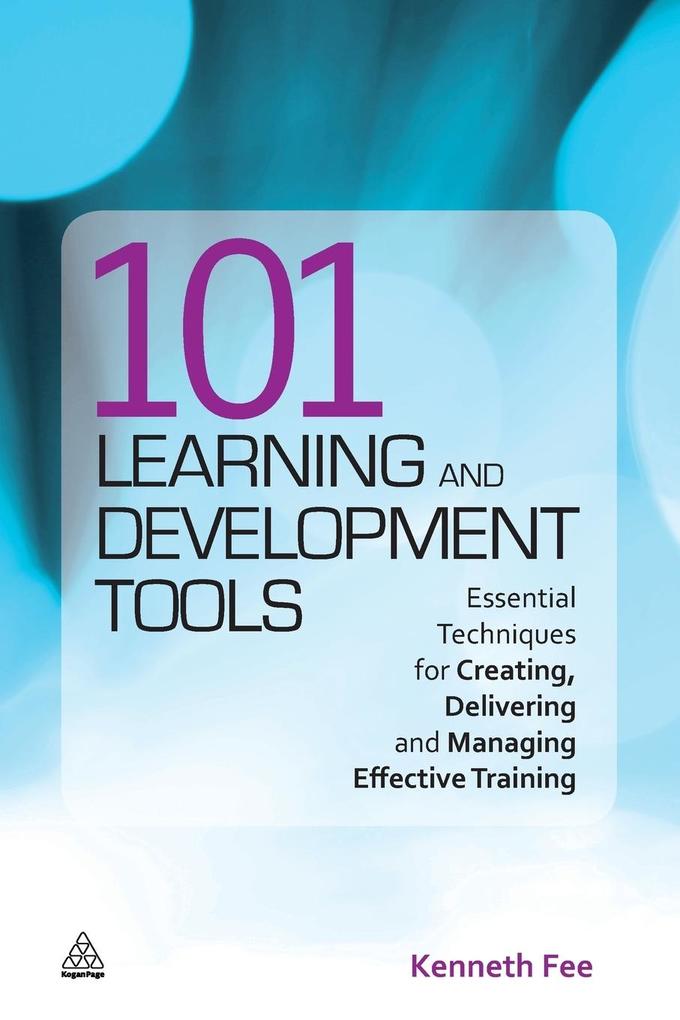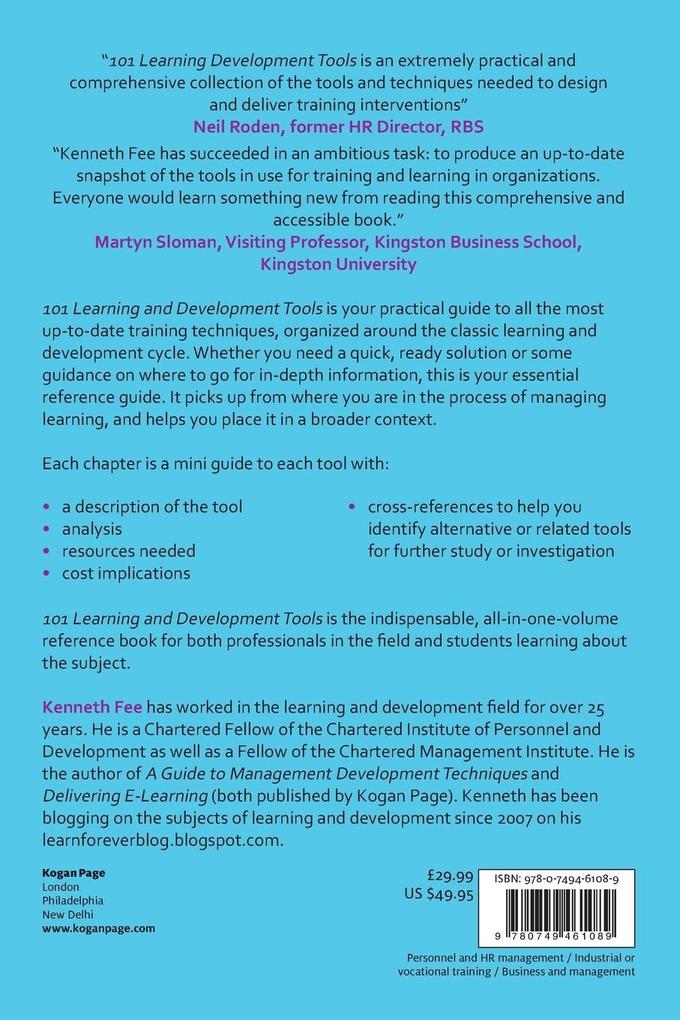""101 Learning and Development Tools" is an extremely practical and comprehensive collection of the tools and techniques needed to design and deliver training interventions." -Neil Roden, former HR Director, RBS
"Kenneth Fee has succeeded in an ambitious task: to produce an up-to-date snapshot of the tools in use for training and learning in organizations. Everyone would learn something new from reading this comprehensive and accessible book." -Martyn Sloman, Visiting Professor, Kingston Business School, Kingston University
"This guide will help HR managers, trainers, and professionals in organization development, change management, talent management and personnel development. The 101 training techniques are described in 2-3 page entries overviewing each technique's main ideas and associated costs. Entries also provide cross references to related tools and list print resources. The 101 techniques are grouped in sections on learning needs analysis and on planning, implementing, and evaluating learning. Some entries describe frameworks [while] others give instructions for tasks such as planning a learning event, procuring learning services, preparing a lesson plan, conducting games and simulations, and keeping learning logs and contracts. Digital tools are described across sections, with entries on social networking and collaborative tools, phases and models of e-learning, and choosing a digital learning platform."
-- Book News Inc.











